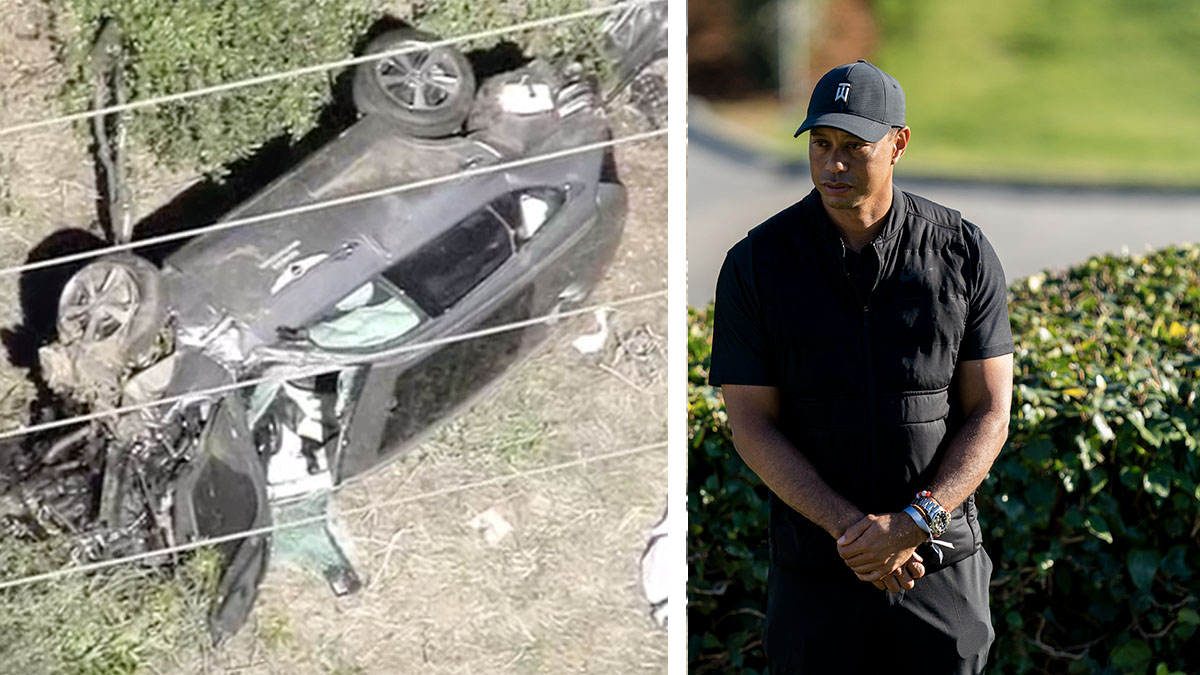Deputy Carlos Gonzalez did not immediately recognize the driver trapped in the mangled SUV that had rolled over several times Tuesday before ending up on its side on a brush-covered hill.
The 30-year-old member of the Los Angeles County Sheriff's Department looked inside the Genesis GV80, but it was too dark to see much. He did what he would normally do when responding to a crash or any emergency involving injuries.
“I wanted to get him talking, so I asked him, ‘Can you tell me what your name is,’” Gonzalez said. “And, he says, ‘Tiger.’ I looked at his face and it took me like half a second, and I immediately recognized him.”
Get top local stories in Southern California delivered to you every morning. Sign up for NBC LA's News Headlines newsletter.
Gonzalez was the first deputy on the scene of Tiger Woods’ crash off a sweeping road on Southern California’s Palos Verdes Peninsula. Golf’s best-known star was on his way to a television shoot in the SUV, provided as a courtesy vehicle, when he crashed into a median and rolled onto the hillside.
Gonzalez said he sometimes catches people topping 80 mph in the 45 mph zone and crashes are common.
Woods was awake, responsive and recovering at a hospital, according to a statement Tuesday from the golf star’s foundation.
Neighbors told NBCLA there have been crashes before on the downhill stretch of road in southwestern Los Angeles County. Some reported a muffled boom Tuesday morning.
A resident’s 911 call alerted first responders to the crash.
We did our job the way we do it every single day.
Los Angeles County Sheriff's Deputy Carlos Gonzalez
After arriving at the scene, Gonzalez found the SUV resting on the driver's side about 40 feet up a hillside. He looked inside through a hole in its shattered windshield and began asking assessment questions.
“My main concern is making sure that they are calm,” Gonzalez said. “I want to make sure that these people are not going to go into shock, and that they’re able to answer questions for ourselves and for our medical professionals.”
Gonzalez asked some initial questions to determine Woods’ mental state. Do you know what day it is? Do you know where you are?
“He seemed calm and did not seem in pain,” Gonzalez said. “He was able to have a conversation with me.”
With Woods in a safe position and showing no signs of extreme pain, Gonzalez determined it was best to leave him in the SUV until firefighter-rescue personnel arrived to pry him free with specialized tools. Once he was out of the wreckage, Gonzalez asked a partner to escort the ambulance that transported Woods to the hospital.
After the ambulance left, Gonzalez found Woods’ phone in the wreckage. He called his partner and asked him to check with Woods about whether he should call anyone to let them know about the crash. He said Woods asked them to contact a member of his team.
“We did our job the way we do it every single day,” Gonzalez said.
Gonzalez said Woods' seatbelt, airbags and the modern vehicle safety features likely prevents Woods from suffering more serious injuries. The passenger compartment protecting occupants appeared to remain intact.
Gonzalez said he has responded to similar crash scenes that resulted in fatalities.
“I will say that it’s very fortunate that Mr. Woods was able to come out of this alive,” Gonzalez said.
Dr. Anish Mahajan, the chief medical officer at Harbor-UCLA Medical Center, said Woods shattered the tibia and fibula bones of his lower right leg in multiple locations. Those injuries were stabilized with a rod in the tibia. Additional injuries to the bones in the foot and ankle required screws and pins, Mahajan said in a statement late Tuesday night.
The lengthy surgery also reduced swelling. Woods was awake and recovering in his hospital room, the statement said.



